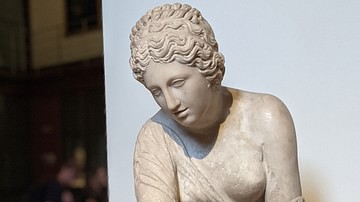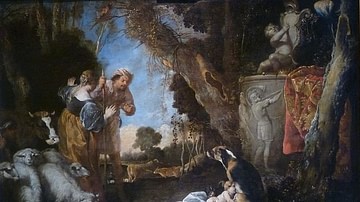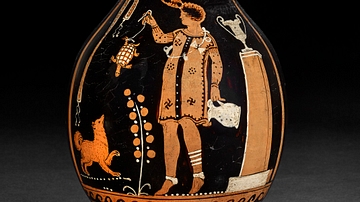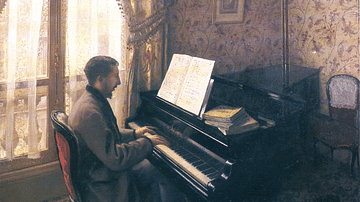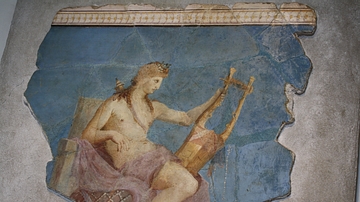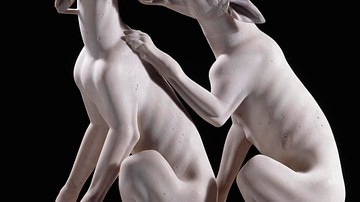Illustration
The motif of the seated young girl dates back to a late Hellenistic model, which in the Roman version, was supplemented by the game gesture. The knucklebones (astragalus) game are often also depicted on funerary reliefs and the portrait-like features of the girl indicate a sepulchral purpose of the sculpture. Marble. Around 150 CE, head around 200 CE. From the Eastern slope of Caelian Hill in Rome, Italy. It is on display at the Altes Museum in Berlin, Germany.
About the Author
Cite This Work
APA Style
Amin, O. S. M. (2019, October 30). Statue of a Girl Playing Knucklebones. World History Encyclopedia. Retrieved from https://www.worldhistory.org/image/11400/statue-of-a-girl-playing-knucklebones/
Chicago Style
Amin, Osama Shukir Muhammed. "Statue of a Girl Playing Knucklebones." World History Encyclopedia. Last modified October 30, 2019. https://www.worldhistory.org/image/11400/statue-of-a-girl-playing-knucklebones/.
MLA Style
Amin, Osama Shukir Muhammed. "Statue of a Girl Playing Knucklebones." World History Encyclopedia. World History Encyclopedia, 30 Oct 2019. Web. 16 Apr 2025.



